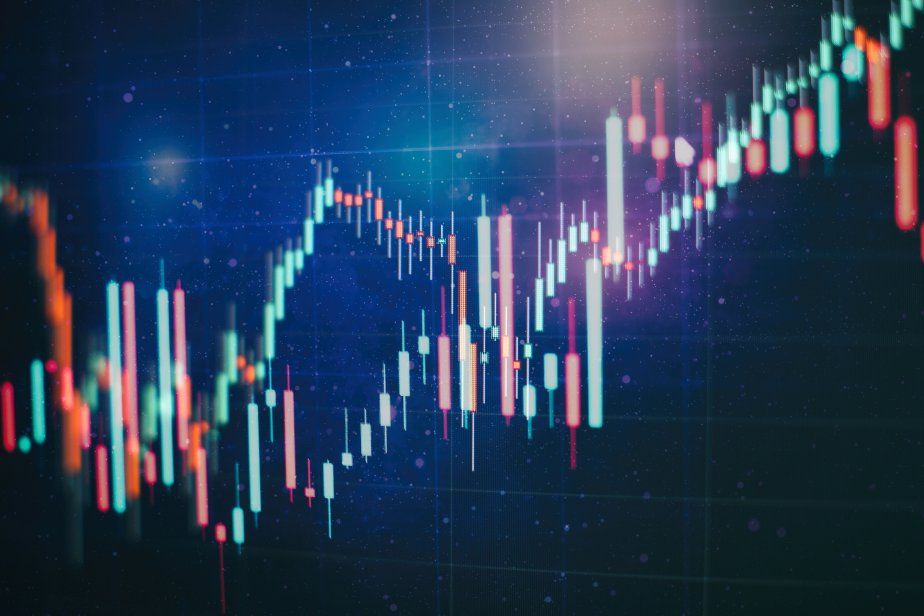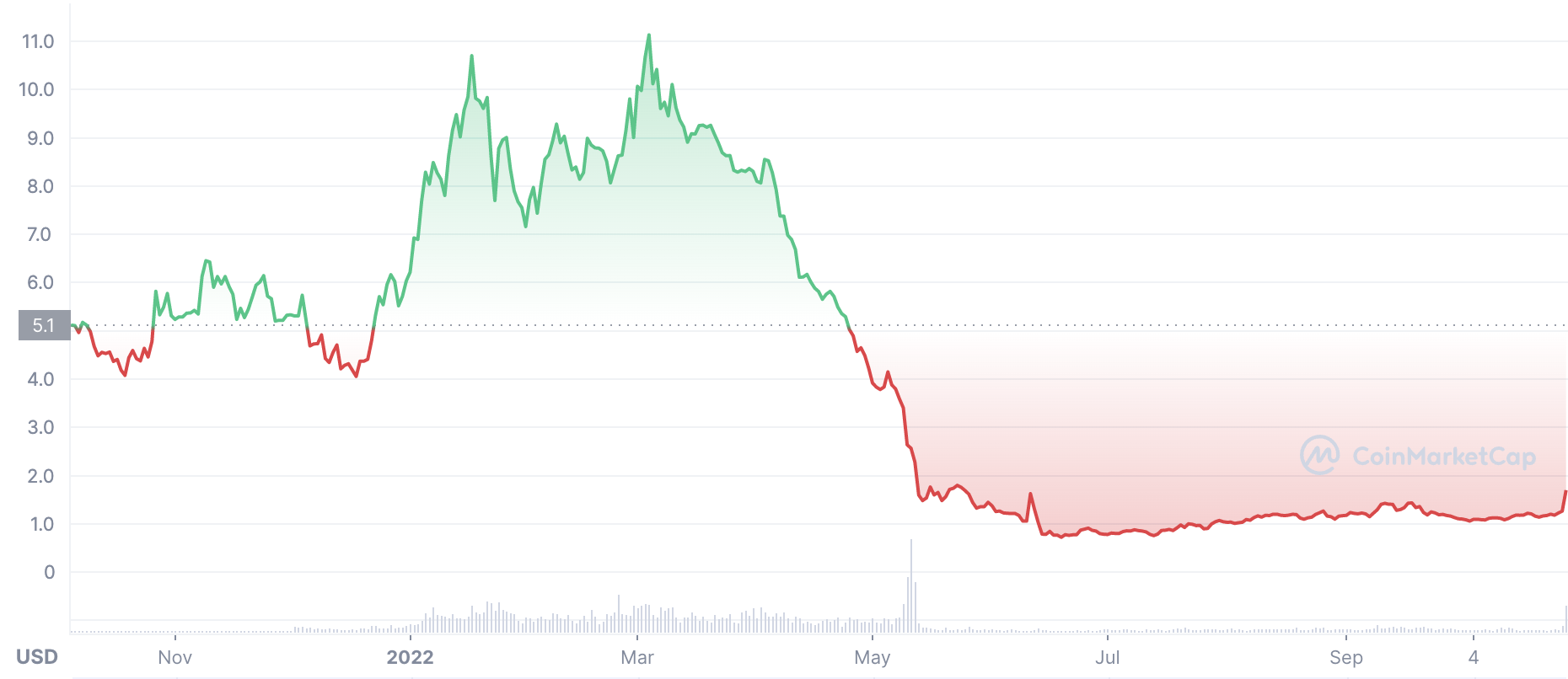Osmosis (OSMO) price prediction: is the AMM coin a buy?
OSMO is rallying after a Binance listing. But can the crypto sustain this momentum? Read the osmosis price prediction analysis here.
The OSMO cryptocurrency for the Osmosis automated market maker (AMM) has broken out of its bearish trend as Binance listed it on the exchange's innovation zone.
The Osmosis project, which launched in June 2021, is the first native AMM on the Cosmos blockchain network and saw success at the beginning of this year. But this initial rise has waned with the crypto crash.
What is an osmosis coin and how does it work? We look at the latest osmosis crypto news and OSMO price prediction for the long term.
Osmosis provides cross-chain exchange
The osmosis cryptocurrency (OSMO) is the native coin for the decentralised exchange (DEX). The launch enables decentralised finance (DeFi) on the Cosmos network.
Osmosis is the eighth blockchain in the Cosmos network (ATOM) to enable the Inter-Blockchain Communication Protocol (IBC), and the sixth blockchain that connects to the Cosmos Hub, according to Cosmos, which is designed to enable interoperability between blockchains.
IBC enables applications based on the Tendermint consensus algorithm to interact with each other, so Osmosis can operate between chains. Users can provide liquidity with their ATOM tokens – the Cosmos native cryptocurrency – and buy tokens that are in the Cosmos ecosystem.
As part of the Cosmos network, which provides modular software development kits (SDKs) for apps, Osmosis offers a platform for customisable AMMs, including token swaps, liquidity pools, staking and governance. According to the Osmosis blog:
“To make such a progressive, adaptable protocol work, governance will be a key factor to Osmosis’ success. Almost every element of the protocol is intended to be upgraded as necessary to keep Osmosis on track to becoming the most innovative AMM platform operating today.
“Stakeholders will vote and help plan to implement new features for the protocol, like front-running protection, validator-backed oracles and more. Governance also allows for rapid fine-tuning of existing parameters such as liquidity mining incentives, which can be adapted as often as a weekly basis.”
OSMO tokenomics
The OSMO token was released with an initial supply of 100 million tokens, which was allocated evenly between airdrops to ATOM holders and a strategic reserve.
A total of 50 million OSMO tokens were allocated to ATOM holders, with the amount proportional to the square root of their ATOM balance, with a special 2.5x multiplier for staked coins.
On most of the Cosmos SDK blockchains, tokens are distributed on the creation of each block, but Osmosis releases new tokens at the end of each daily epoch. The token runs on a “thirdening” schedule similar to Bitcoin’s halving. The number of new tokens issued will be reduced by a third every year (365 daily epochs).
According to the blog:
“In the first year, there will be a total of 300 million tokens released. After 365 days, this will be cut by a third, and thus there will be a total of 200 million tokens released in year two. In year three there will be a total of 133 million tokens released. And so on. This thirdening process will allow OSMO to reach an asymptotic maximum supply of one billion.”
New tokens are distributed as follows:
-
25% to rewards for staking
-
25% to vesting for developers
-
45% for liquidity mining incentives
-
5% to the community pool
The 25% of staking rewards will be issued to validators and delegators. Validators, which participate in the consensus mechanism, will be expected over time to participate in more processes as the functionality of Osmosis expands, including price oracles and bridges.
Osmosis is the 35th largest protocol in terms of total value locked (TVL), which stands at around $263m at the time of writing, according to data compiled by DeFi Llama. With a circulating token supply of 282.46 million out of a total of 325 million, OSMO had a total market capitalisation of $476m, ranking it the world’s 209th largest cryptocurrency as of 28 October.
OSMO’s price history
OSMO went live on 5 October at $5.12, according to CoinMarketCap, and closed the month just above its launch price at $5.24.
OSMO's all-time performance
 Source: CoinMarketCap
Source: CoinMarketCap
It fluctuated around that $5 level throughout the following month. However, it eventually dipped to a low of $3.98 on 17 December.
However, OSMO saw its largest breakout in January, while other cryptocurrencies was wrestling with the wider bear market.
The DeFi token surpassed $10 on 17 January, which followed a spike in its TVL that hit $1.47bn on the same day. These surges came a week after Osmosis made it easier for developers to run nodes on the protocol.
Despite a few troughs, both the TVL and price continued rising throughout the coming months. OSMO reached its all-time high of $11.21 on 4 March, similarly its TVL peaked at $1.8bn the previous day.
However it eventually fell victim to the crypto crash and plummeted to its all-time low of $0.68 on 18 June.
Osmosis has made significant gains recently as the Binance exchange listed OSMO in its innovation zone with a BUSD, USDT and BTC pairing.
As of 28 October, OSMO was trading at $1.70, up 51% in the past seven days.
Osmosis price prediction: how will the coin perform in 2022?
The short-term sentiment for the OSMO price was neutral at the time of writing, with 20 technical analysis indicators showing bullish signals and just eight bearish signals, according to CoinCodex.
CoinCodex’s osmosis price prediction for 2022 suggested that the coin value could have climbed by 48% to $2.42 on 27 November.
DigitalCoinPrice anticipated a gradual price rise, with the coin averaging $1.81 in 2022 and $4.51 in 2025. Its osmosis price prediction for 2030 said this value would have hit $9.40.
PricePrediction.net’s OSMO forecast was cautious on the near-term outlook for the coin but the most bullish for the long term, estimating that the price could average $1.90 in 2022. Its osmosis price prediction for 2025 gave an average price of $5.67 and said it could achieve $34.64 in 2030.
Meanwhile, the osmosis crypto price prediction from Wallet Investor was bearish and suggested it could fall as low as $0.038 in a year’s time.
Gov Capital’s technical analysis was also bearish. Its OSMO price prediction estimated that it would have become worthless in a year’s time.
It’s important to keep in mind that cryptocurrency markets remain extremely volatile, making it difficult to accurately predict what a coin’s price will be in a few hours, and even harder to give long-term estimates. As such, analysts and algorithm-based forecasters often get their osmosis coin price predictions wrong.
If you are considering investing in cryptocurrency tokens such as osmosis, we recommend that you always do your own research. Look at the latest market trends, news, technical and fundamental analysis and expert opinion before making any investment decision. Keep in mind that past performance is no guarantee of future returns.
FAQs
Is osmosis a good investment?
Cryptocurrencies are volatile assets with a high risk-reward profile, especially newer coins like OSMO. Whether osmosis is a good fit as an investment in your portfolio depends on your personal circumstances and risk tolerance. You should evaluate the level of risk you are prepared to accept before investing and never invest money that you cannot afford to lose.
Will osmosis go up or down?
The most bullish forecast, from PricePrediction.net, had OSMO soaring past $200 by 2030, whereas Gov Capital said it could have become worthless in a year.
In volatile cryptocurrency markets, it is important to do your own research on a coin or token to determine if it is a good fit for your investment portfolio. Whether OSMO is a suitable investment for you depends on your risk tolerance and how much you intend to invest, among other factors. Keep in mind that past performance is no guarantee of future returns. And never invest money that you cannot afford to lose.
Should I invest in osmosis?
Whether you should invest in OSMO is a question that you will have to answer for yourself. Before you do so, however, you will need to conduct your own research and never invest more money than you can afford to lose because prices can go down as well as up.